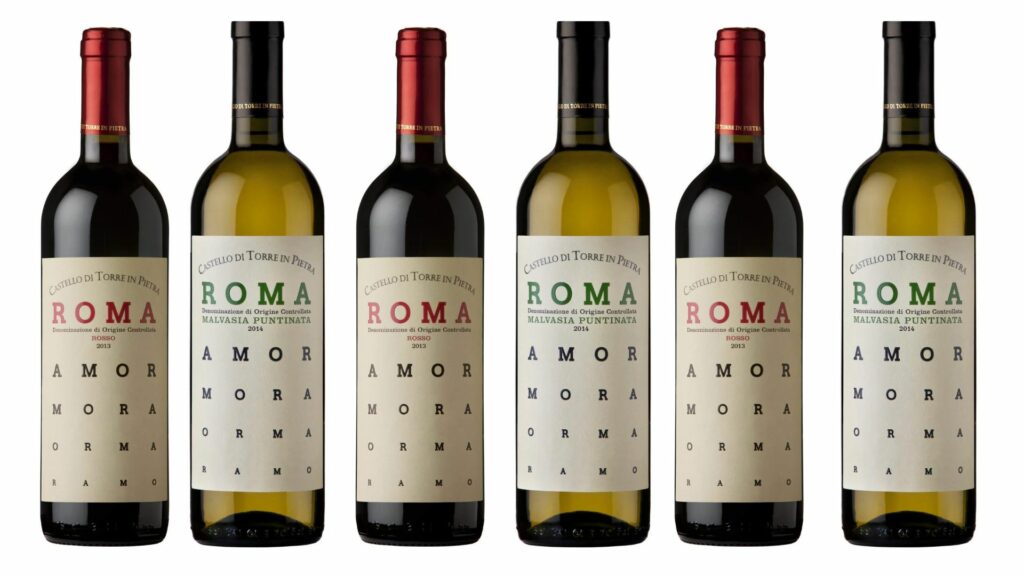DiVino may earn commissions from qualifying purchases.
Roma DOC (Denominazione di Origine Controllata) is a classification of wine based on geography, history, and tradition. A recent addition to Italy’s exhaustive list of DOC and DOCG wines, and originates in the Lazio region, with Rome as its epicenter. The growing and production area encompass the surrounding countryside
History of Wine in Rome
Wine in Rome has a fascinating history that dates back centuries. Wine grapes and winemaking techniques arrived with the Greeks, and flourished under Etruscan rule. The Romans absorbed the culture and expanded upon it. Ancient Romans cherished their wine culture, and Rome became a hub for viticulture and winemaking. The fall of the Roman Empire may have momentarily threatened wine production, but thanks to a need for eucharist wine, monasteries preserved many of the grape varieties still in use today.
Roman Wine Today
LAZIO DOCG WINES
Lazio, the region of central Italy that is home to Rome, has a prolific wine production, and much of it is still consumed locally. The most famous appellation wines in Lazio include Frascati Superiore DOCG, a blend of indigenous white grapes historically grown and produced in the hill towns southeast of Rome. Cesanese del Piglio DOCG brought some prestige to Lazio’s most prized indigenous red variety, Cesanese, which develops beautiful smoky, earthy, and deep fruity aromas.
Lazio DOC Wines
Lazio counts around thirty DOC wines, all notable for their local character and indigenous grapes. The most famous are Orvieto and Est Est Est, both of which share a production zone with Umbria.

Where is Roma Doc Produced?
The growing and production area encompass the metropolitan city of Rome and the surrounding countryside, extending to the coastal regions, the Sabina Romana and the Colli Albani hills.
Roma DOC Grape Varieties
The classification Roma DOC includes red wines, white wines, rosato wines (rosé) and even sparkling.
Roma Bianco
Main grapes of Roma DOC white wines: Malvasia di Candia, Malvasia Puntinata, Trebbiano Toscano, and Bellone, Bombino Bianco, and Greco.
Roma DOC Bianco (white) is a blend with majority Malvasia and Bellone or a single-varietal focused, In which case you will see it on the label. For example: “Roma Doc Malvasia Puntinata.”
Roma Rosso
Roma DOC Rosso is made mainly from Sangiovese, Cesanese, and Montepulciano, Syrah, Cabernet Franc, and Cabernet Sauvignon.
Roma DOC Rosso is always 50% Montepulciano and 35% of the others listed above.
How is Roma DOC Wine is Produced
Roma Doc winemakers adhere to strict production regulations and winemaking techniques to maintain the wine’s authenticity. The use of modern technology, combined with traditional methods, allows them to strike a balance between innovation and heritage. The grapes are carefully harvested and processed to preserve their natural flavors. Fermentation and aging take place in temperature-controlled stainless steel tanks or oak barrels, depending on the desired style of the wine.
Roma Doc Rosso (reds) are often barrel aged for a year or so to smooth out some of the tannins in Cesanese and Sangiovese.

Roma Doc Terroir
The Lazio region’s geographical location and climate provide ideal conditions for grape growing: Exposure to the West, South-West, and South, a moderate Mediterranean climate, a combination hilly terrain and low-rolling plains and altitudes reaching 600 meters above sea level, and variegated volcanic and sandy soils. The cooling influence of the nearby Tyrrhenian Sea breezes combined with hot sunny days and altitude results in diurnal temperature shifts. Read: hot days and cool nights, which is a perfect recipe for ripe, even grapes.
Mineral-rich soil favors acidity, a component of body and freshness in wines, not to mention smoky aromas in the red and stony notes in the whites.
Roma Doc Tasting Notes
Roma Doc wine is known for its elegance and versatility, offering a range of styles to suit different palates. The white wines are typically dry, crisp, and refreshing, with delicate floral aromas and flavors of citrus fruits and tropical notes. Think: peach, apricot, plum, sweet citrus, green apple, and even a little pineapple or banana.
Floral notes include wild flowers and roses, especially with a lot of Malvasia.
Expect balanced acidity and a pleasant mineral finish and sometimes some bitter almond.
Roma DOC red wines can be quite complex. with aromas of dark berries, spices, earthiness, tobacco, and smoky leather. Montepulciano add a little milk chocolate on the nose and softness to the palate. Within a few years of their release they have evolved aromas and a relatively balanced palate.
How to Pair Roma DOC with Food
Both the red and white versions of Roma DOC pair exceptionally well with traditional regional cuisine. Roman cuisine is diverse and seasonally driven. Classic pastas like Carbonara and Matriciana start with guanciale (cured pork), a gamey, fatty, and savory element that really comes through with both red and white wines with clean acidity and a long mineral finish. The smoky quality of Roma DOC red wines also emphasizes the flavor of not only guanciale, but also Rome’s signature lamb dishes, whereas the floral, fruity, and mineral quality of Roma DOC whites is stunning seafood-based pastas like spaghetti allo scoglio (with clams).
Read more about how to pair food and wine.
Visiting Roma Doc Wineries
For wine enthusiasts, a winery visit is a captivating experience. The the lush and rolling hills of the Roman countryside make for a picturesque landscape there’s nothing better than tasting wine in the place where it grows. Learn more about the history of wine in the region, and get a dose of local flavor. Nothing beats the passion and dedication of the winemakers.
For more information on custom wine tasting itineraries and tours, contact us at [email protected]



